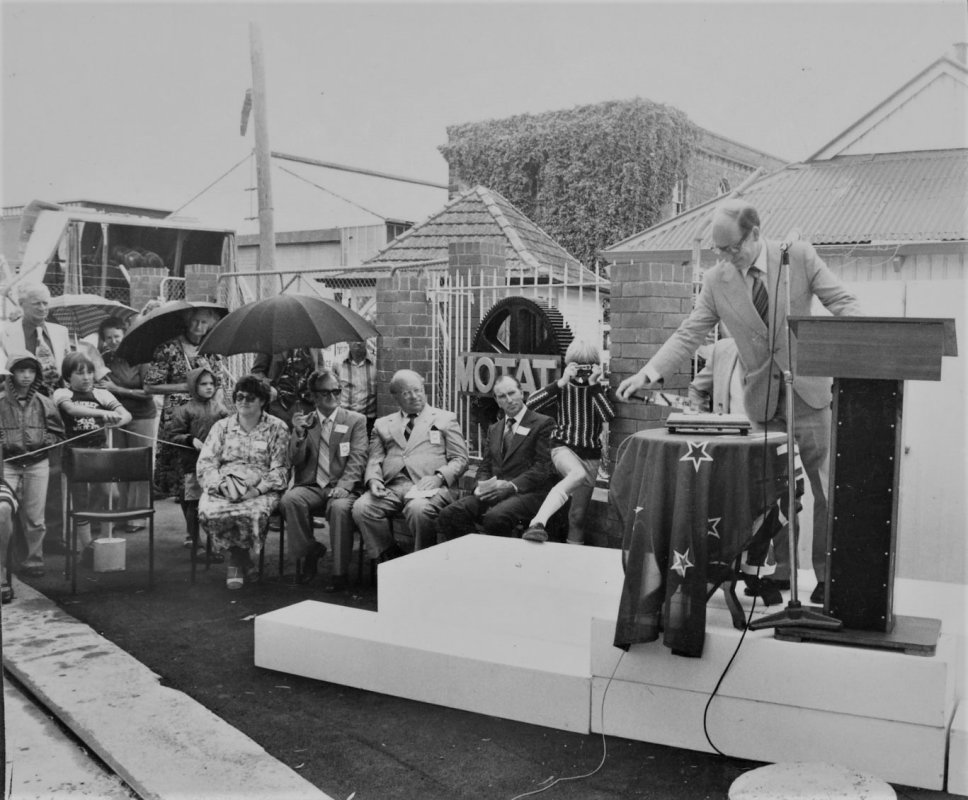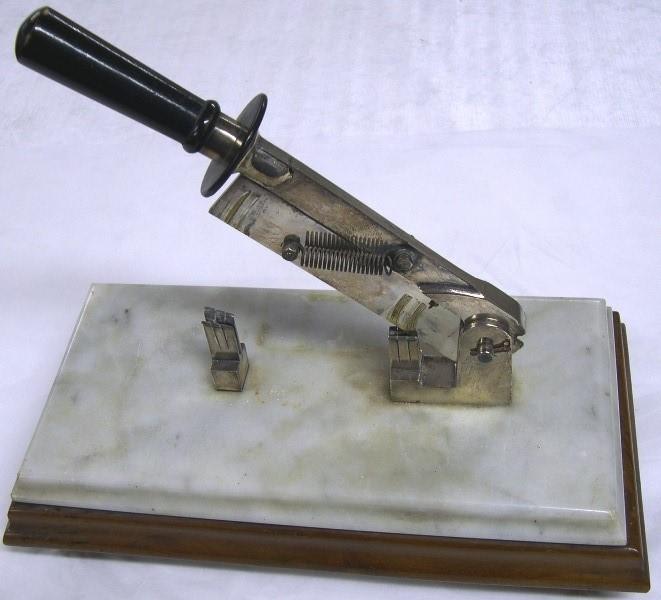Meet MOTAT's Mercury Arc Rectifier

One of the most interesting yet overlooked objects at MOTAT is the Mercury Arc Rectifier.
I first saw the Mercury Arc Rectifier during a visit to MOTAT night lights event one evening. Despite working at MOTAT for over a year, I had never been inside this particular building at night. It had been easy to overlook it during the day, but at night this object was captivating. The Mercury Arc Rectifier is tucked away behind a door marked: "Danger High Voltage, Authorised Personnel Only."
How can I describe it? A collection of electrical wires, glass bulbs and giant glass balloons, it looked straight out of a time travel movie, or an H.G. Wells novel. The bulbs and balloons were glowing an intense blue-green colour. Upon closer inspection, the bright colour was pulsing repeatedly, with the occasional flash, like that of a camera. What was this thing? And what was it doing at MOTAT? I just had to find out more.

Mercury-Arc Rectifier [2004.318] Museum of Transport and Technology (MOTAT).
What does the Mercury Arc Rectifier do?
The Mercury Arc Rectifier helps to power the electrical tramway running between the two MOTAT sites. The arc rectifier converts AC current to DC current. At MOTAT the input is 6600 volts AC, and the output is 550 volts DC.
The large glass bulb contains a pool of liquid mercury. This is an unusual metal that is liquid at room temperature. When AC electricity is added into this mercury pool, it creates a reaction that boils the mercury, releasing a cloud of mercury vapour.
Electrons leave the mercury vapour in a chaotic process called ionisation. This ionisation looks like a super bright flash, which we call an arc. An arc is unique in that it lasts for a long time. Arcs are formed when there is lots of electrical energy ionising a gas (lightning is a form of natural arcing, after gases in the atmosphere become ionised).
All these readily available electrons are pulled down by the reactor into DC electricity. The mercury can easily gather new electrons, meaning the whole system is self-renewing. These sealed arc rectifiers can last for a long time.
At MOTAT there are four large arc rectifiers working in tandem to send power out to the trams, you can see the arc glow changing in intensity as the trams speed up and slow down. The current flows through the overhead wires, down through the tram arm, and into the tram tracks. Some people at MOTAT can tell which tram drivers are working, based on how bright the arcs are!
Why is there a Mercury Arc rectifier at MOTAT?
Originally tram carriages were pulled by horses, but these were later upgraded to be pulled by steam-powered motors. Eventually, most trams and trolleys in New Zealand were electrified, although this electrification still largely relied on steam power. Steam and coal-powered boilers, like the one in the MOTAT pumphouse, would power large generators which created 500-600 volts of DC electricity. This power was fed straight into the tram wires without conversion, so most electric trams were built to rely on this kind of electricity.
On special occasions, such as rugby games, or race days, many trams were needed to transport the crowds. This required a lot of power, and the boilers couldn’t keep up. On these days the trams would slow to a walking pace. Because of this, mercury arc rectifiers were installed throughout New Zealand to convert the high voltage AC grid electricity into an unlimited supply of DC electricity for the trams. Many of the trams at MOTAT come from a time when mercury arc rectifiers were commonly used.
How did the Mercury Arc Rectifier come to MOTAT?
When the tramway was installed at MOTAT in 1967, it shared power with the passing Point Chevalier trolley bus route, powered by the Point Chevalier substation.
The rectifier at MOTAT was originally part of the Dominion/Mount Albert road substation that powered trolleybuses along Dominion, Owairaka, New Windsor and Richardson roads from 1951. During the 1970s, trolleybuses were disappearing from Auckland, and the MOTAT tramway couldn’t rely on public substations anymore. The Dominion road rectifier was installed at MOTAT in 1980.


Image 1.Tramway: Zoo extension, Stage 1 [05-1809] Walsh Memorial Library, The Museum of Transport and Technology (MOTAT).
Image 2. Commemorative Electrical Knife Switch [2006.66] Museum of Transport and Technology (MOTAT).
See more pictures of the Auckland trolley bus era on MOTAT collections online.
Who maintains the Mercury Arc Rectifier and what does this involve?
The Mercury Arc Rectifier is a self-sustaining system, needing very little human intervention. The only way we can safely enter the room is to turn off the incoming power from the grid. This is quite a hassle and is not done very often. There are plans to install a modern breaker switch, which would allow MOTAT to turn the power off more frequently, without involving the power company.
MOTAT staff inspect the rectifier each year and perform maintenance to ensure it can continue to run. Only a small part of the rectifier is currently needed to power the MOTAT tramway. Remember, this unit was built to power a much larger area, operating many trolleybuses at once.
In 2019, MOTAT purchased an almost new rectifier unit from Duncan Terrace in Wellington. This was used to power part of the recently closed Wellington trolley bus system, and the switching gear was of the same vintage as ours, but with a modern solid-state rectifier. MOTAT purchased the second rectifier unit for installation at M2 as a backup to the heritage Mercury Arc unit at M1.
Where can I see the Mercury Arc Rectifier?
The rectifier sits within a custom room between buildings two and three, on the main forecourt at MOTAT 1. You can view the rectifier from within the Accelerate exhibition in building two. Upgrades to the presentation of the rectifier are planned for 2022.
Story by Phoebe Drayton, Educator, MOTAT
Citation:
Drayton, Phoebe. 2021. Meet MOTAT's Mercury Arc Rectifier. New Zealand: The Museum of Transport and Technology (MOTAT). First published: 08 December 2021. URL https://www.motat.nz/collections-and-stories/stories/meet-motats-mercury-arc-rectifier